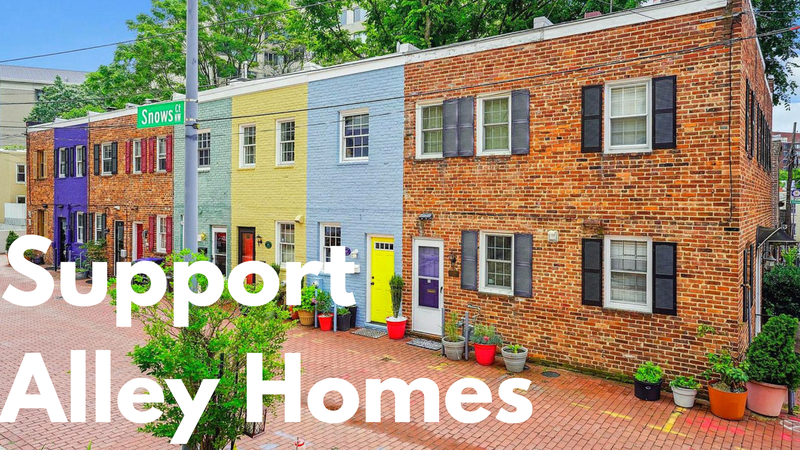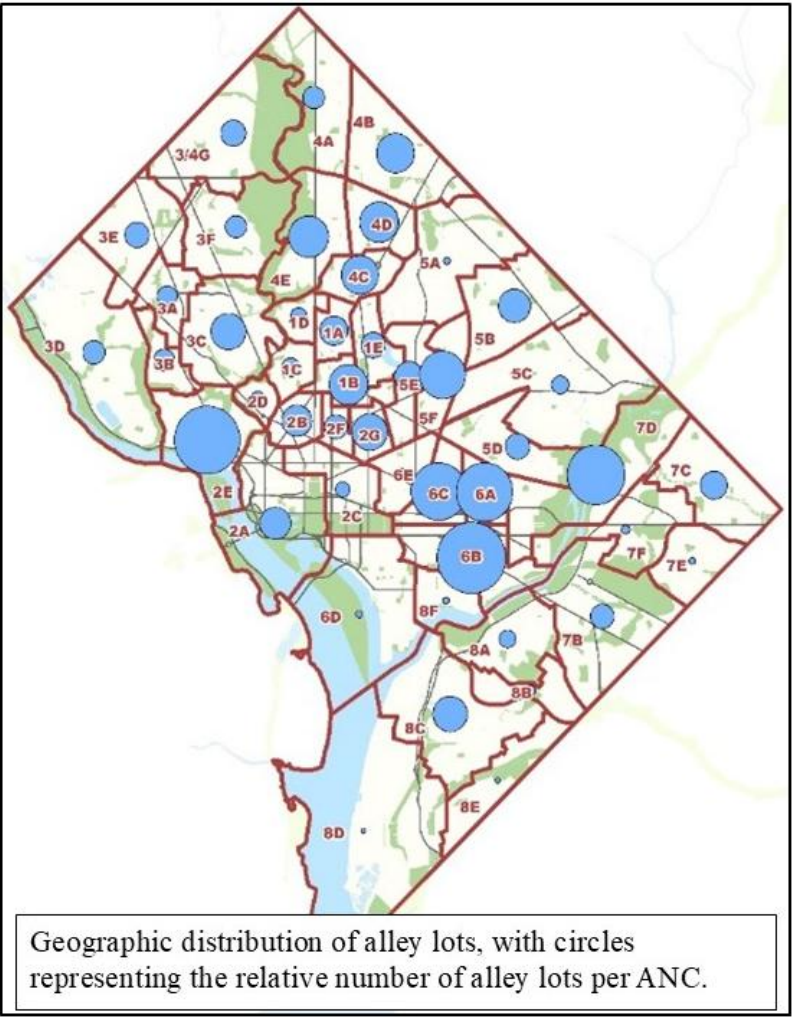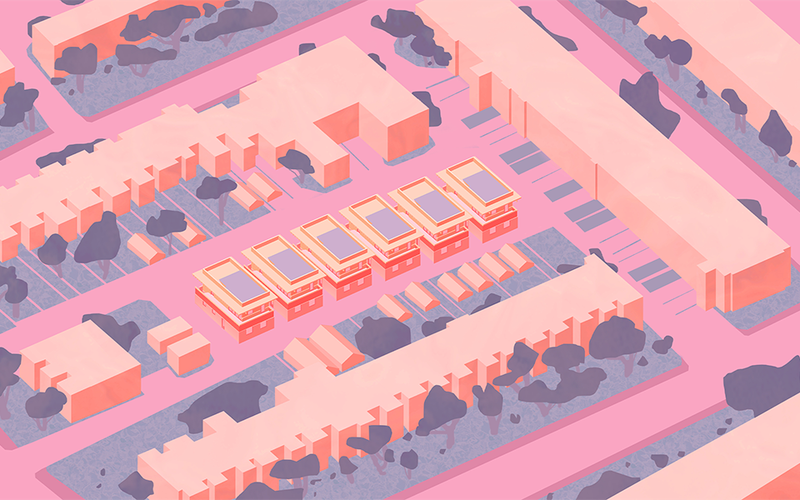Support Alley Homes

DC's Office of Planning has proposed zoning changes that would enhance housing creation on alley lots across the District. Alley lots are underutilized spaces that could supply starter homes and small apartments to help alleviate DC’s housing shortage.
These changes align with the city's goals to support equitable and inclusive growth and provide diverse housing options. Alley housing can help address affordability, increase neighborhood safety through active use, and enhance community character.
Email the Zoning Commission
We support these changes, but they should go further. DC is facing a housing shortage that drives up prices and forces people out of their communities. To create more affordable units, the Zoning Commission should:
- Eliminate expensive parking mandates for alley homes.
- Align unit limits with the limits of their zones.
- Align the height limits of alley homes with their zones.
Send an email to the Zoning Commission and tell them to unlock the potential of alley homes!
Together, we can unlock the potential of alley homes to build a more inclusive, vibrant, and affordable DC.
City-wide Impact
The Office of Planning estimates that there are about 1,900 alley lots spread throughout the District. The largest concentrations are in older neighborhoods like Capitol Hill, Georgetown, and U St. Nearly half of all alley lots are located in the RF-1 zone, which provide for areas developed primarily with rowhomes.

Allowing small apartments and starter homes to be built in some of DC's most expensive neighborhoods could have a significant impact on housing creation in the city, allow more people to live near where they work, and make DC more affordable for everyone.
Proposed Changes
While we support the Office of Planning's alley lot proposal, we think a few key changes could unlock more housing and affordability.
Eliminate Expensive Parking Mandates for Alley Homes
The Office of Planning's proposal maintains expensive parking mandates for alley homes, even when those homes would be built on small lots or lots near Metro or high-frequency bus routes.
The Office of Planning estimates that about a third of alley lots, and over 40% of vacant lots, are smaller than 450 square feet. These lots are perfect for the sort of small, starter homes that DC currently lacks.
But requiring parking for small lots can make it impossible to build at all. It limits the available living space and can require that the entire first floor of a building becomes a garage. Requiring parking also encourages car use in a walkable, transit-rich city. By keeping these requirements in place, the Office of Planning is artificially limiting the creation of exactly the kind of affordable housing the city needs more of.
We believe the city should exempt alley homes from parking mandates. This will lead to less cars on the road, fewer carbon emissions, and more homes for families in walkable neighborhoods.

Align unit limits with the limits of their zones
Current zoning regulations limit the number of homes that can exist on a lot depending on the zone it's in. Up to one unit is allowed in an R-1A zone (detached, single-family homes), while up to two units are allows in an RF-1 zone (rowhomes). This is why there are so many English basements in Capitol Hill rowhomes, and so few duplexes in Upper Northwest DC. They're illegal to build!
The current Office of Planning proposal would artificially limit the potential of alley homes by allowing only a single unit even in RF-1 zones. It would also allow a maximum of two units in RA (apartment) and MU (mixed use) zones. Non-alley buildings in those zones can have dozens of units.
To get around these rules, home builders would have to go through an expensive, time-consuming process of seeking a special exception from the Board of Zoning Adjustment. This can add months of delay and significant expense to a project, and some homes won't get built as a result.
We believe the city should allow the same number of units to be built by-right in alley lots as in the street-facing lots of that zone. All buildings would still be subject to health and safety regulations and the building code, there just wouldn't be difficult process to get around to create more homes. This change would unlock additional housing potential in over 1,000 alley lots.
Aligning unit limits with the zone would also encourage the construction of income-restricted, affordable housing. DC's Inclusionary Zoning program only requires dedicated, affordable homes in projects with more than 10 units.
Align the height limits of alley homes with their zones
The Office of Planning's proposal would cap the height of alley homes in most zones at 22 feet, or 2 stories. In a select few mixed use zones, they would be allowed to go to 30 feet, or 3 stories. This means that even in areas where large apartment buildings line the streets, alley home sizes will be severely restricted.
We believe the city should align alley home height limits with the height limits of their zones. This will allow our second proposed change - aligning unit limits with the limits of their zones - to have a significant impact.
